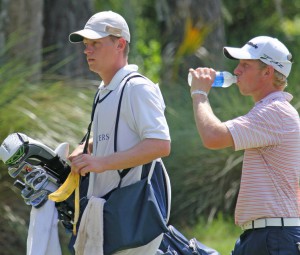Shoulder pain can affect much more than just our comfort. It can limit our ability to pick up our children, carry groceries, or even reach for something on a high shelf. If you’ve been struggling with nagging shoulder pain, there’s a strong possibility it may be due...
A stress fracture is a small crack within a bone. However, unlike acute fractures, which occur from a sudden injury, stress fractures gradually develop over time and are common among athletes, runners, and individuals with physically demanding lifestyles. These tiny,...
Tendons are tough, fibrous tissues that connect muscle to bone and play a critical role in our movement, from helping us swing a tennis racket to allowing us to lift groceries or climb the stairs. But for all their strength and flexibility, tendons are also...
Avoiding Golfing Injuries

To someone observing golfers out enjoying their weekend game on the links, it most likely looks to be an injury-free sport. After all, it’s low-impact, played at a leisurely pace, and many golfers don’t even walk the course; they use golf carts. But looks can be deceiving. It turns out there is indeed quite a bit of physical stress involved in the game. This is mostly due to the swiftness of motion and the possibility of hyper-extension during the back-swing and downswing.
Luckily, there are ways to prevent or limit injuries out on the links. Here are a few of them.
- Always stretch before playing. This doesn’t mean it has to be done right before teeing off; it’s fine to do it at home. Focus on your back, biceps, quadriceps, and shoulders.
- Weight training a few times a week will strengthen and tone the muscles used in the game. Kettlebell workouts are becoming quite popular and they do a good job of strengthening the core which is a critical muscle group used in golf.
- Anyone just taking up the game is well-advised to ease into it. It may be tempting to get out there as often as possible but too much too soon is rarely a good idea. Humana.com says that this is often the cause of “golfer’s elbow”. Strong forearm muscles can also help prevent this injury. Doing wrist curls and reverse wrist curls with a light dumbbell is a good way to develop strength in this area.
- An occasional massage is not only an indulgence; it can also work out those kinks and identify problem areas.
- Before playing, try getting to the club early and spending some time on the driving range. This will help loosen you up and will improve your game.
- Be sure to stay well hydrated before playing and while on the course. Water and sports drinks are good choices; save the beer for later.
- Use a sunscreen, even on cloudy days.
- When riding in a golf cart it is important to keep one’s feet inside whenever it’s moving. Golfers have been known to break or strain ankles by hopping into or out of a moving cart.
- Always listen to your body. It will usually give warning signals if one will simply pay attention. For example, golfers experiencing pain in the elbow, hands, or wrists can often get relief by switching to softer or larger club grips.
Following these tips and using common sense will help in avoiding golfing injuries and add to the enjoyment of the game. Anyone experiencing chronic pains or injuries should consult an orthopaedic doctor; ignoring the problem will just make things worse.

